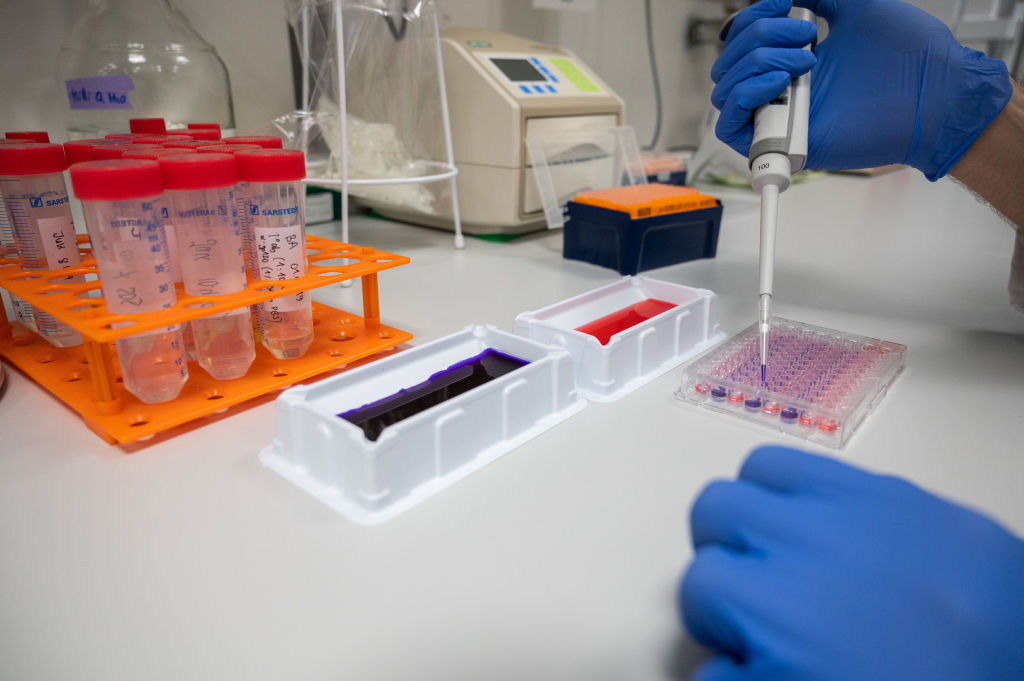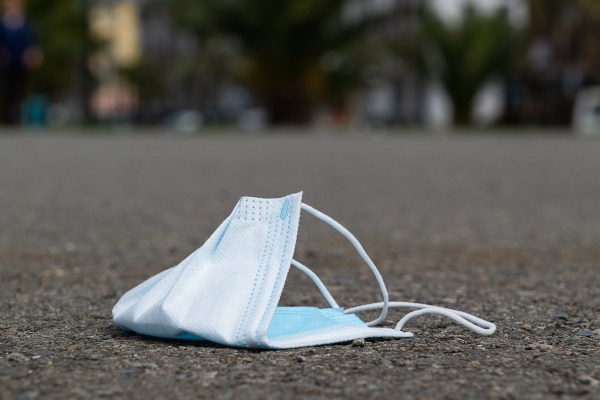The House Select Subcommittee on the Coronavirus Pandemic began wading into a sea of acronyms in its first hearing Wednesday as part of its dauntingly broad charge to investigate “the origins of the Coronavirus pandemic, including but not limited to the Federal Government’s funding of gain-of-function research.”
Although a select subcommittee on COVID has existed under the auspices of the House Oversight Committee since April 2020, this is the first time it’s been led by Republicans—and gain-of-function (GOF) research is one of the topics they want to highlight.
The previous Democratic majority on the subcommittee “stifled every attempt that we had to do our own oversight,” a Republican aide told The Dispatch. “They didn’t sign on or join any of our origins or gain-of-function requests. … They were particularly one-sided and only focused on the Trump administration.”
Congressional oversight is invariably tinged with partisanship regardless of who is in charge, and Wednesday’s hearing was no exception. But as the murky origins of the virus remain under intense scrutiny, the GOF research issues Republicans are raising are both important to the public and widely misunderstood.
Virologist and former CDC Director Dr. Robert Redfield contends that such research “probably caused the greatest pandemic our world has seen” by creating the conditions for the SARS CoV-2 virus to accidentally escape from the Wuhan Institute of Virology in the fall of 2019. Other prominent scientists disagree in “good faith,” he said, but the COVID origins question has revived a debate that dates back to at least 2011.
What is gain-of-function research?
The term “gain of function” can refer to “any genetic mutation in an organism that confers a new or enhanced ability,” according to a 2022 Congressional Research Service report—including mutations that occur in nature or have nothing to do with infectious diseases. The elasticity of the concept has made defining GOF research in the regulatory realm notoriously difficult, but Redfield provided a one-sentence definition in his testimony at Wednesday’s hearing.
“This is a type of research in which scientists seek to increase the transmissibility or pathogenicity of an organism in order to better understand that organism and inform preparedness efforts and the development of countermeasures such as therapeutics and vaccines,” he said.
Much GOF research also falls under the umbrella of dual-use research of concern, a jargony way of describing a double-edged sword that can be wielded to great benefit or great harm.
But consensus on these terms is “lacking,” the Congressional Research Service said, and if Congress wants to take on a greater role in regulating gain-of-function research, it will need to home in on clearer definitions.
The 2011 scare.
The scientific debate surrounding gain-of-function research began in earnest in 2011 after the publication of two National Institutes of Health-funded studies. They examined transmission of the H5N1 bird flu virus among ferrets, prompting review by the independent National Science Advisory Board for Biosecurity (NSABB). While H5N1 is common among birds, it only rarely infects humans and is quite lethal when it does, so documented mammal-to-mammal transmission was concerning. According to NIH, the authors of the studies took the recommendations of NSABB and NIH and held back from publishing the details of their methods in order to prevent the “replication of the experiments by those who would seek to do harm.”
In addition to the H5N1 studies, an unrelated rise in lab biosafety incidents in the U.S. heightened concerns, leading the Cambridge Working Group convened by Harvard epidemiologist Marc Lipsitch to call for experiments involving potential pandemic pathogens to be “curtailed” until a thorough risk/benefit analysis had been undertaken.
The 2014 pause.
In the fall of 2014, the White House Office of Science and Technology Policy (OSTP) paused federal funding of GOF research on flu, SARS, and MERS viruses. The moratorium affected 18 projects, seven of which later received exemptions.
One project already in motion at the time was a study conducted at the Wuhan Institute of Virology in China by the EcoHealth Alliance on modified bat coronaviruses. The NIH allowed the project to move forward: Since both the original and modified versions of the virus were transmissible, the virus did not “gain” a function it did not already have—a justification critics point to as evidence of a need to reform how GOF research is defined, reviewed, and regulated. (This EcoHealth study was the cause of sparring between Sen. Rand Paul and former National Institute of Allergy and Infectious Disease director Dr. Anthony Fauci.)
The 2014 moratorium resulted in the White House releasing a set of guidelines during the final weeks of the Obama administration that were used to craft a new HHS policy framework—called P3CO—in December 2017. But data on how the framework has been used is not publicly available, and it does not cover research not funded by the federal government.
The end of the moratorium—and thus the return to federal funding of virus-enhancing experiments—happened quietly in 2018 and 2019, frustrating scientists who believe the risky nature of GOF research warrants an exceptional degree of scientific transparency and public debate.
“We have serious doubts about whether these experiments should be conducted at all,” Lipsitch of Harvard and Tom Inglesby of Johns Hopkins wrote in February 2019. “But with deliberations kept behind closed doors, none of us will have the opportunity to understand how the government arrived at these decisions or to judge the rigor and integrity of that process.”
What now?
As the intelligence community continues to investigate the origins of COVID—and to what degree GOF research might have played a part—the future of U.S. policy on GOF research remains unclear.
Redfield wants a moratorium “similar to what we had in the Obama administration,” which could be helpful since most past regulation and oversight of GOF research has happened through the executive branch. The most significant recent step toward reform was the release in January of a new proposed oversight framework developed by NSABB at the request of HHS. Among other things, the new framework recommends that the definition of “potential pandemic pathogen” be expanded so as to not allow risky research to slip under the government’s radar. It also recommends greater transparency into the P3CO process and enhanced oversight of research that isn’t federally funded.
How the executive branch will handle the proposal—which is simply a recommendation without the force of law—remains to be seen. But given the possibility that the COVID pandemic might have come about as a consequence of gain-of-function research, some say the time is ripe for greater public discussion. And if Congress wants U.S. policy to move beyond intra-governmental recommendations and pass laws, it will need to take the lead.
“I don’t think this should be a decision made by scientists alone,” Redfield said in his testimony at Wednesday’s hearing. “This is a societal decision. There should be a broad debate about whether this research is really necessary, and if so, we should decide how to do it safely and responsibly.”









Please note that we at The Dispatch hold ourselves, our work, and our commenters to a higher standard than other places on the internet. We welcome comments that foster genuine debate or discussion—including comments critical of us or our work—but responses that include ad hominem attacks on fellow Dispatch members or are intended to stoke fear and anger may be moderated.